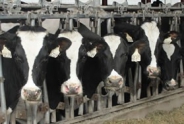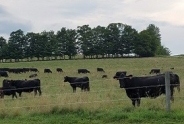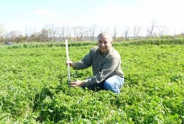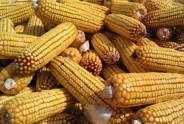Field Crop Update August 9, 2024
Erik Smith, Area Field Crop Specialist/Team Leader
Central New York Dairy and Field Crops
1. Field Observations and Weather Outlook
First, I want to take this opportunity to thank Mary Thomas Powell (right) and Samantha Thompson (left), the two incredible interns that helped me scout fields, check pheromone traps, and sweep alfalfa fields for potato leafhopper this season. Mary Thomas is a junior double-major in Environmental Studies and Biology at Colgate, and Samantha is a sophomore Agronomy major at Iowa State. Both learned a lot about upstate NY and our agriculture, and both were critical in serving and communicating with our region's producers this summer. Thank you both, and best wishes in your studies!
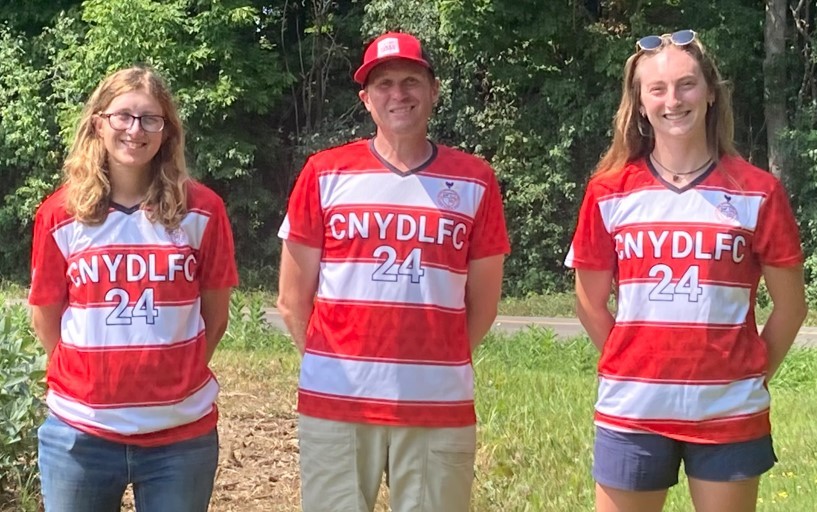
Crops are still looking excellent, and keep an eye on your corn as silage season approaches. Some of the earliest crops may be ready by the end of this month, while the bulk of acreage should be ready around the first week of September.
But the story of the day is obviously the rain. The only notable area of abnormal dryness in our part of NY was Greene County, but that will almost certainly be removed from the US Drought Monitor map by next week. Please be careful today with the ongoing heavy rainfall.
Again, we want to remind farms to DOCUMENT AND SHARE any impacts the weather may have had on your home or business. This can include structure damage, crop loss, inventory loss due to power outages, damage to equipment or fencing, and more.
If your farm experiences any sort of damage, please reach out to any of the folks listed below (or all of them). The more impact information that is collected, the greater the likelihood of a disaster declaration which can bring vital emergency support and awareness. The CNYDLFC Team will continue to collect detail and submit to NYSDAM and the EDEN network.
Reporting Weather Related Impacts (For your home or farm business)
- First, ensure that all the people and animals on your farm are safe, and that there aren't any unsafe working conditions created because of the weather (check your structures!). If there's an emergency, call 911 - don't try to manage it all on your own.
- Second, document all negative weather impacts for your farm and their estimated financial cost. Take photos, make estimates, and put it all in a safe place.
- Reach out to your insurance providers - farm, vehicle, crop, etc. to initiate the claim process as needed.
- Then, share your farm's damage with any (or all) of the ag support agencies listed below. We all work together to collect storm damage information and funnel it up to Ag and Markets which can initiate a natural disaster declaration.
- Your local Cornell Cooperative Extension Association Office.
- Chenango: 607-334-5841
- Fulton/Montgomery: 518-853-2135
- Herkimer: 315-866-7920
- Madison: 315-684-3001
- Otsego: 607-547-2536
- Schoharie: 518-234-4303
- Saratoga: 518-885-8995
- Any of our CNYDLFC Team members (calls/emails/texts/site visit requests all ok)
- Nicole Tommell: 315-861-6001
- Erik Smith: 315-219-7786
- Daniela Gonzalez: 315-749-3486
- Ashley McFarland- 315-604-2156
- Your county USDA/FSA service center.
- Chenango: 607-334-3231
- Fulton/Montgomery: 518-853-4015
- Herkimer: 315-866-2520
- Madison:315-824-9076
- Otsego: 607-547-8131
- Schoharie: 518-295-8600
- Saratoga: 518-692-9940
- Your local Cornell Cooperative Extension Association Office.
- Your county farm bureau manager
- Region 3: Bailey Coon: 518-937-0566
- Region 5: John Wagner: 315-761-9770
- Region 6: Natally Batiston: 518-937-0269
- Region 7: Todd Heyn: 518-431-9338

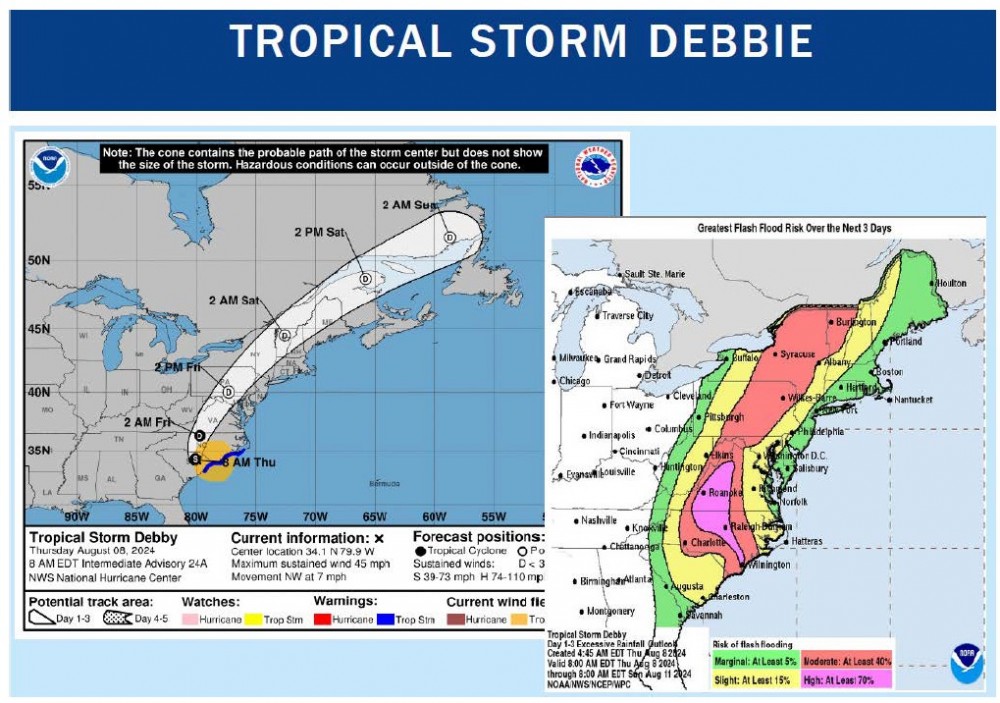
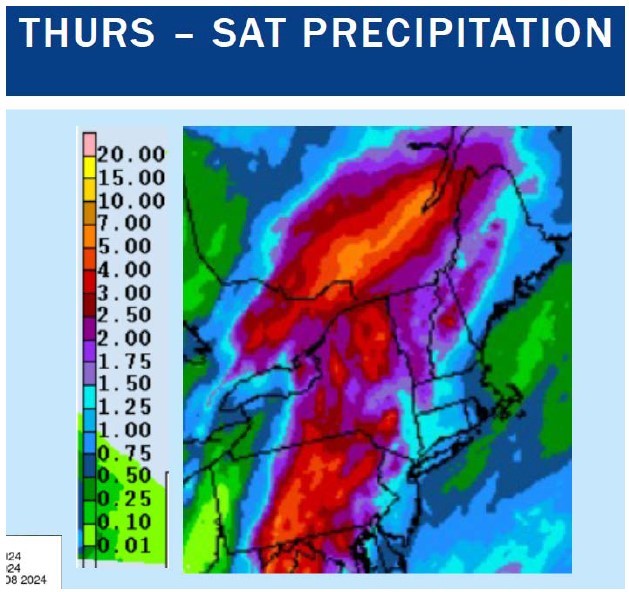
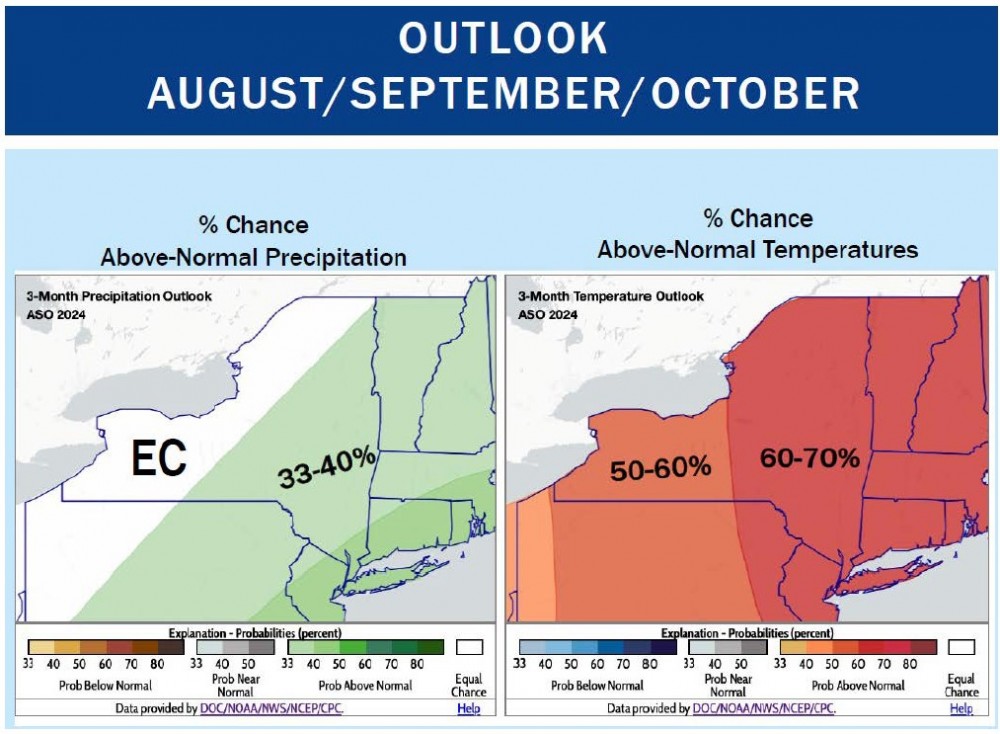
2. Growing Degree Days (GDD) (See: Climate Smart Farming Growing Degree Day Calculator)
Growing degree days (GDD) are calculated by taking the average daily temperature and subtracting the base temperature for development of a given organism ((High + Low)/2 - base temp = GDD). For corn silage, we are using base 50/86, as corn development starts at 50 degrees F and ceases above 86. Check your location and planting date:
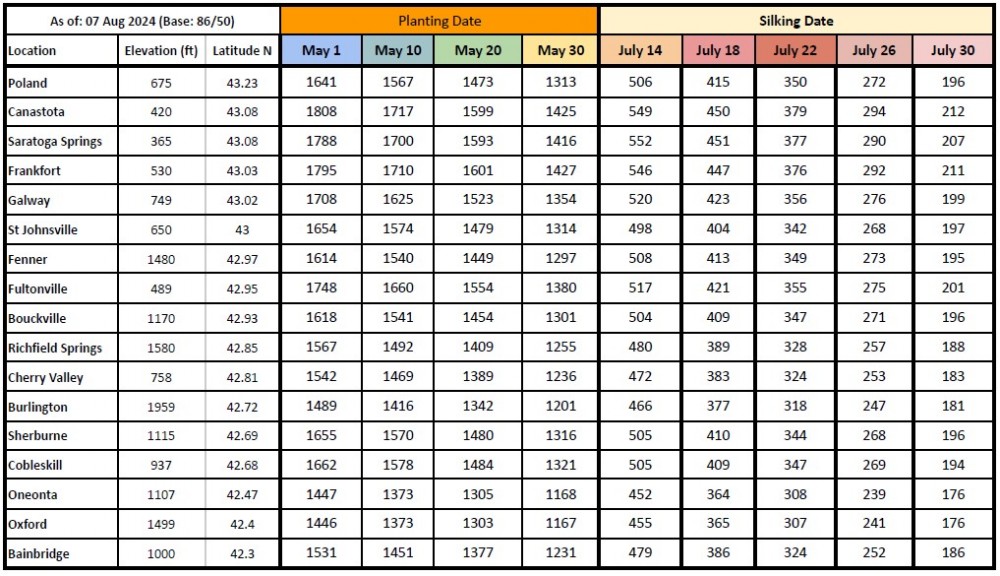
Remember: Silage corn needs 750-800 GDD (depending on hybrid maturity) after silking to reach a whole plant DM of 32%. Under typical late season dry down conditions we can expect the crop to reach 35% DM four to seven days later. We can expect to accumulate 20-25 GDD per day, or even up to 30, so peak maturity can creep up on us quickly. But no matter what the numbers say, always check your crop to see how close you may be to harvest. For more details, see this article: https://ecommons.cornell.edu/server/api/core/bitstreams/5a5c472d-0fa1-452a-abd4-929ebcb9feec/content
3. Pest Monitoring
PLH numbers remained low this week in the western part of the CNY region where field were recently harvested, but crops in the east remained under high pressure. Weather systems can bring more PLH into the region, but heavy rain can knock them from plants and drown them.
Western bean cutworm numbers have dropped drastically, signaling the end of their flight, but the beginning of their feeding stage. Viptera Bt hybrids will be protected from this pest. Fall armyworm numbers remain low in NY, but there are reports of fields being devastated in Georgia. We'll continue to monitor this pest through the end of summer.
Field Crop Update August 9, 2024 (pdf; 864KB)
Upcoming Events
Labor Roadshow IX
December 1, 2025
December 9 - December 10, 2025December 17 - December 18, 2025December 22, 2025
In-person and online events to keep NY's agricultural employers informed and prepared for today's labor challenges.
Inspired by Annie's: How to Be a Strong Woman Farm Manager
January 10, 2026
January 17, 2026
Free webinars geared towards women who own or operate a farm in NYS.
2026 Dairy Day
January 13, 2026 : Dairy Day - Hamilton
Hamilton, NY
Lunch included
January 14, 2026 : Dairy Day - Ballston Spa
Ballston Spa, NY
Lunch included
Announcements
Statewide Field Crop Pathology Needs Assessment Survey
Your input is wanted for identifying priorities!Sign Up for Our Weekly E-Newsletter
We send out a bi-weekly e-newsletter that has announcements, upcoming programs, and opportunities for you! Registration is quick, easy, and free. Click here to sign up today!Farmers Can Join MeatSuite For Free!
MeatSuite.com is a free resource provided by Cornell University where NY meat farmers can create a farm profile and list their bulk (wholes, halves, quarters) and bundled (i.e. Grilling Bundle) meat products.Why should farmers join?
1. It's free and easy!
2. Connect with more local customers. In the past year the MeatSuite.com farm directory had 8,300 visits from New York consumers. Farm profiles get as many as 25 views per month from potential local customers. We also spotlight MeatSuite farms on social media and bring attention and purchases to farms through highlights and giveaways.
How do I join?
Farmers can visit https://www.meatsuite.com/farmers/ to create a free farm profile. You must list at least one product for your farm's profile to go live. You'll also have access to Cornell's free Meat Price Calculator, a helpful tool for pricing your meat to make a profit.
While you're on MeatSuite, check out the "Creating Consumer-Friendly Bulk Meats" publication on the log-in page. It has tips on how to create bulk meat products that are easier for first-time buyers to say "yes" to.
If you have any questions as you create your farm profile or products, we're here to help! Please email Matt LeRoux at mnl28@cornell.edu.

